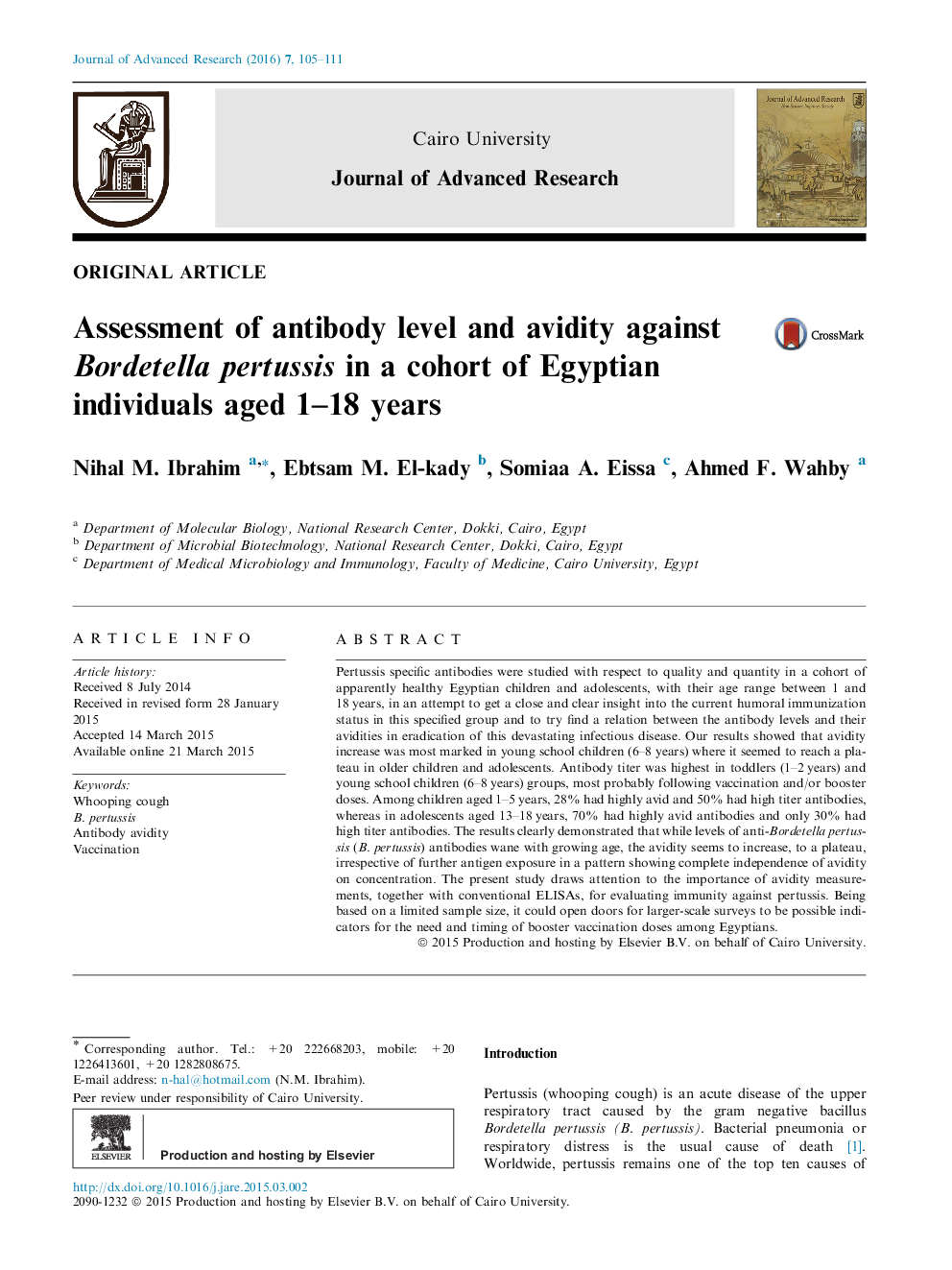| Article ID | Journal | Published Year | Pages | File Type |
|---|---|---|---|---|
| 826119 | Journal of Advanced Research | 2016 | 7 Pages |
Pertussis specific antibodies were studied with respect to quality and quantity in a cohort of apparently healthy Egyptian children and adolescents, with their age range between 1 and 18 years, in an attempt to get a close and clear insight into the current humoral immunization status in this specified group and to try find a relation between the antibody levels and their avidities in eradication of this devastating infectious disease. Our results showed that avidity increase was most marked in young school children (6–8 years) where it seemed to reach a plateau in older children and adolescents. Antibody titer was highest in toddlers (1–2 years) and young school children (6–8 years) groups, most probably following vaccination and/or booster doses. Among children aged 1–5 years, 28% had highly avid and 50% had high titer antibodies, whereas in adolescents aged 13–18 years, 70% had highly avid antibodies and only 30% had high titer antibodies. The results clearly demonstrated that while levels of anti-Bordetella pertussis (B. pertussis) antibodies wane with growing age, the avidity seems to increase, to a plateau, irrespective of further antigen exposure in a pattern showing complete independence of avidity on concentration. The present study draws attention to the importance of avidity measurements, together with conventional ELISAs, for evaluating immunity against pertussis. Being based on a limited sample size, it could open doors for larger-scale surveys to be possible indicators for the need and timing of booster vaccination doses among Egyptians.
